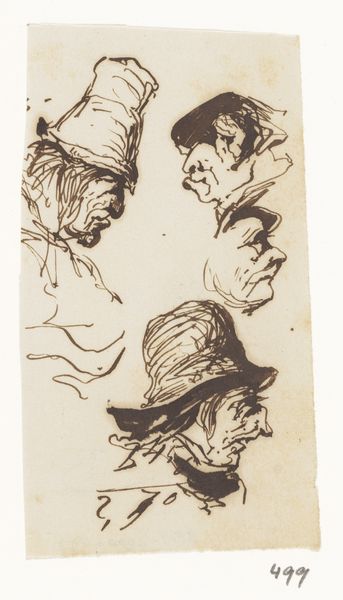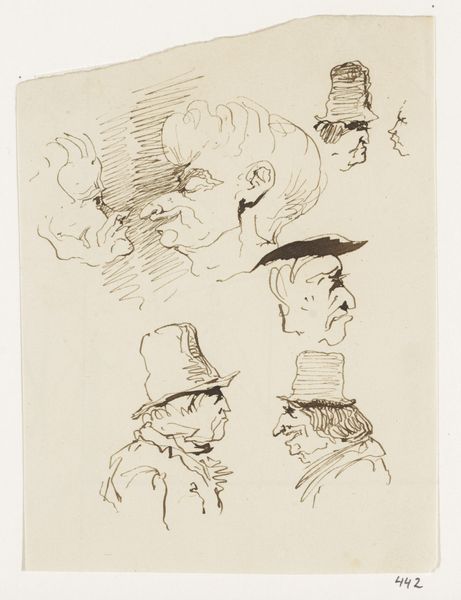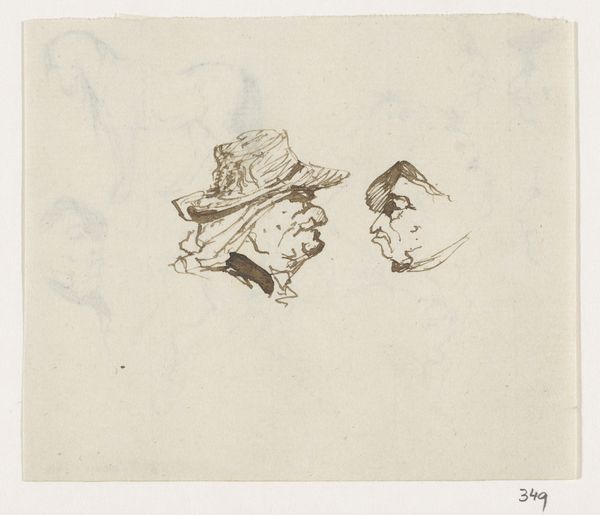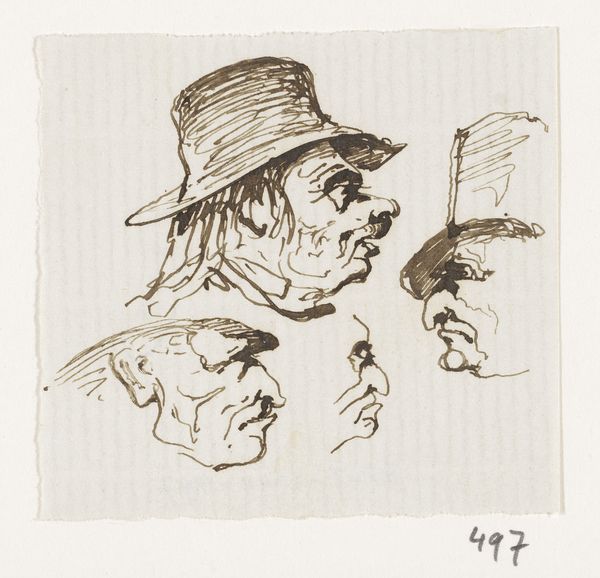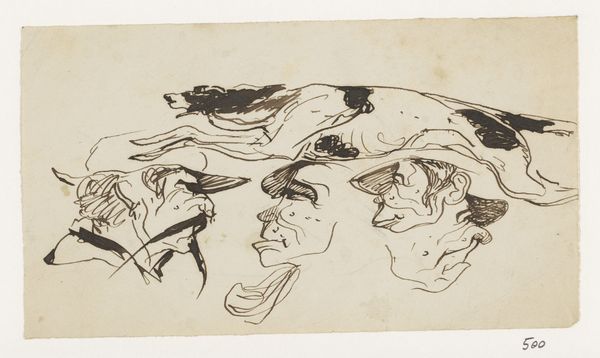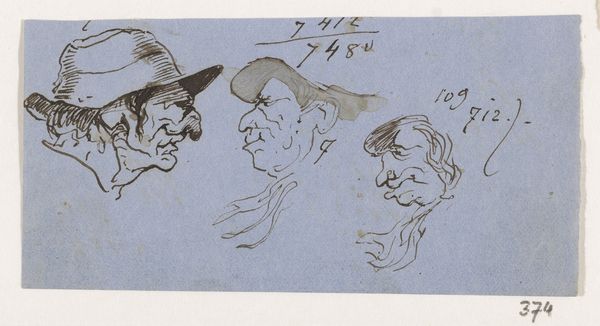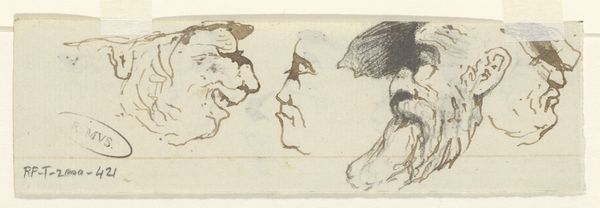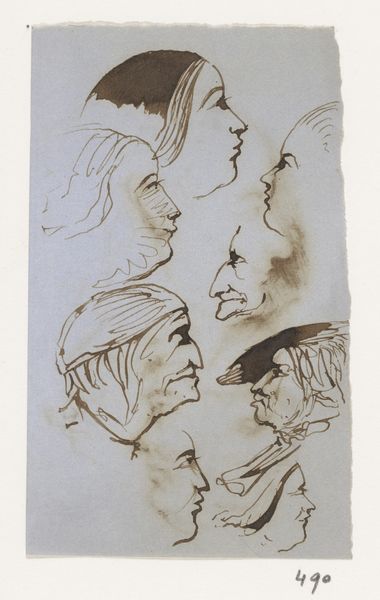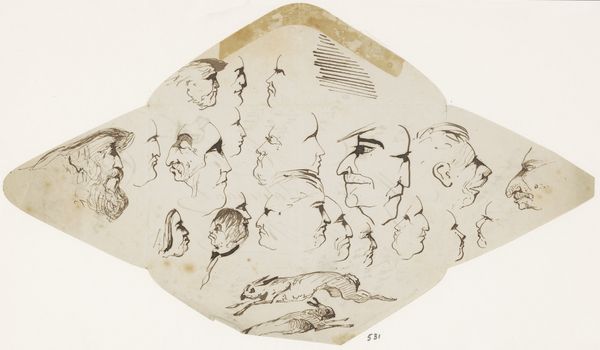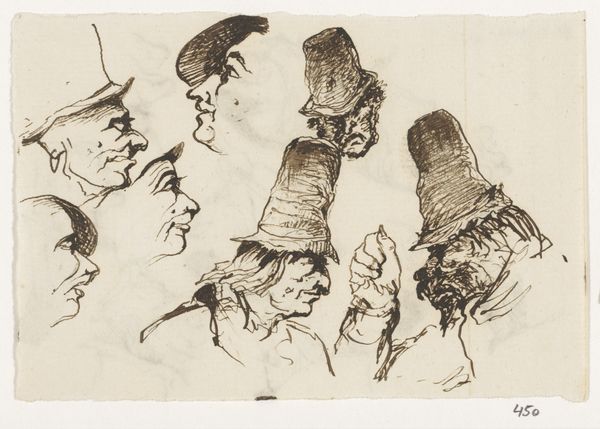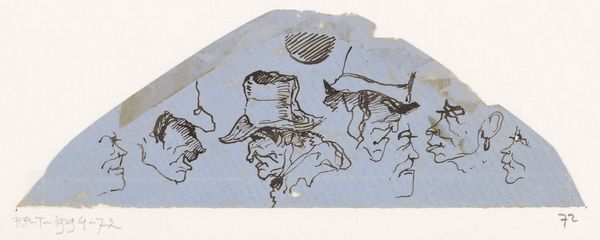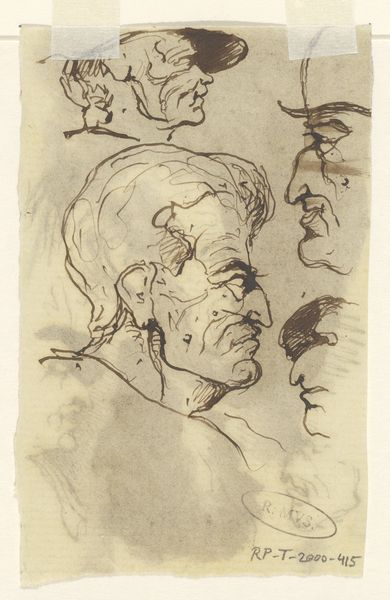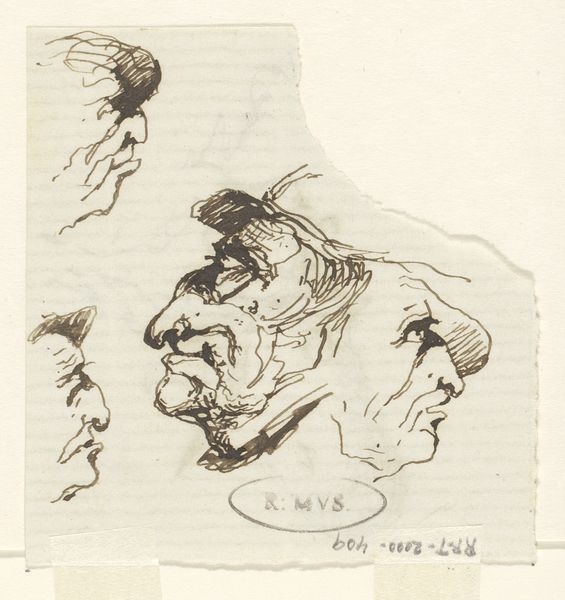
Dimensions: height 128 mm, width 140 mm
Copyright: Rijks Museum: Open Domain
Curator: Here we have "Koppen," a pen drawing made sometime between 1840 and 1880, currently residing in the Rijksmuseum. The artist is Johannes Tavenraat. Editor: What a striking series of caricatures! There's a playfulness to these ink sketches, a sense of capturing fleeting expressions. Curator: Indeed. Consider the composition – the page is filled with a dynamic arrangement of faces, each a study in line and form. Note the contrast between the densely hatched areas, creating shadow, and the more spare, flowing lines defining the contours. Editor: The hats immediately bring to mind stereotypes of the era: the large brimmed straw hats, the connotations of the wearer's class. Who are these people? Where do they sit in relation to Tavenraat? The inscription – is that the artist’s signature or commentary? It’s fascinating to consider the narrative implied by these stylistic choices, potentially reflections of the Dutch societal hierarchy. Curator: A point well taken. I’m intrigued by the intentionality within what seems like spontaneous sketchbook work. Look how the planes of each face are constructed—the economy of line, the subtle modeling achieved through varying pen pressure. It invites questions of physiognomy—an obsolete and debunked pseudoscience—attempting to map character through facial features. Editor: Right. Are these portraits of specific people, or studies in human character generally? Were these faces meant to capture and perhaps codify particular racial and ethnic types circulating in the Netherlands at that time, reflecting colonial ideologies? This image is filled with tensions about class, societal structures, the practice of viewing as dominance, all made sharper in the quickness of ink. Curator: Precisely. By restricting the palette to a single ink tone, the artist forces our attention to the essential elements of form: line, shape, and tone, allowing for focused observation. Editor: It serves as a sobering reminder to stay mindful when interpreting these ‘captures’ of different faces throughout history. Curator: Absolutely. Viewing art, ultimately, demands we engage thoughtfully with our own prejudices, and our own vision.
Comments
No comments
Be the first to comment and join the conversation on the ultimate creative platform.
